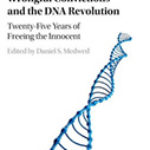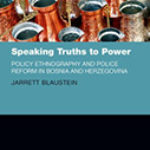Developing Restorative Justice Jurisprudence: Rethinking Responses to Criminal Wrongdoing

Author: Tony Foley
Publisher: Farnham, Surrey; Burlington, VT: Ashgate, 2014. 262p.
Reviewer: Steve Kirkwood | January 2016
I have heard it said that the integration of criminal justice and restorative justice processes corrupts both approaches. The criminal justice process is corrupted through bringing in unwieldy, unpredictable and highly individual preferences on behalf of those who have committed a crime and those harmed by it. Some victims of crime are forgiving, sympathetic and see no point in prison; others may be harsh, punitive and desire retribution. Similarly, some of those who have committed a crime may be articulate, responsible, and willing to address their wrongs; others may be uninterested, unable or unwilling to make amends. Conversely, some say that restorative justice – a process that seeks to bring those responsible for and affected by a specific crime together to safely discuss and address the harm caused – may be corrupted by linking it with incentives for participating, such that those responsible for a crime may agree to participate in order to receive a more lenient sentence. This book by Tony Foley provides a helpful way for cutting through such simplistic assessments and offers a perspective for understanding how both restorative justice and criminal justice processes may contribute towards achieving justice.
As a social scientist, rather than a law scholar, I will admit I found this a challenging but rewarding read. Although it can be read cover-to-cover, each of the three parts has a distinct angle and approach, such that many readers may find it helpful to focus on particular sections. The book is indicative of the maturation of restorative justice (in certain jurisdictions) and builds a case that begins with an in-depth interrogation of the philosophical understandings of justice, eventually moving towards specific case studies – in Australia, New Zealand and Canada, as well as briefer discussions of other countries – in order to provide concrete examples of how restorative justice has been implemented, and developed over time, in particular contexts. The first part, where notions of justice and wrongdoing are discussed, will appeal to those with a particular interest in the philosophical aspects of law and justice. The second part takes this further by critically discussing the extent to which both criminal justice and restorative justice processes meet these philosophical understandings of justice, and moves towards an exploration of how particular legal principles have developed in New Zealand and Canada in relation to restorative justice. The third and final part examines the practicalities of restorative justice in greater detail, leading into conclusions regarding the requirements for further developing restorative justice.
One aspect I found particularly helpful was the reconceptualisation of justice from redistributing burdens and benefits to understanding justice as activating ‘flows’ in order to meet specific aims (Chapter 2). For me, this dealt with the concern that attempts to restore equilibrium in the aftermath of crime assumes that burdens and benefits were equally distributed prior to the offence and / or conceives of benefits and burdens in such a narrow sense that it risks reinforcing the unequal circumstances that existed prior to the crime and claiming that such an outcome is just. Foley argues that justice processes should create such flows towards harm related benefits – e.g., restoring feels of safety, addressing a sense of loss, repairing relationships – and burdens – e.g., communicating censure, providing material reparation, creating personally burdensome consequences – while adhering to broader notions of justice (e.g., just deserts, equal treatment). This conception is helpful for understanding how both restorative justice and criminal justice processes can contribute towards justice goals. In particular, Foley highlights how the emphasis within restorative justice on reparation and apology has much to offer for mainstream criminal justice processes.
Writing this from the context of Scotland – where the availability and use of restorative justice processes remains relatively limited (as indicated by the fact that Scotland does not even appear in the index!) – it was extremely helpful to learn about how restorative justice has developed and been embedded in different foreign jurisdictions. In particular, in considering how restorative justice might be further developed in Scotland, it was useful to reflect on Foley’s ‘five key design lessons’ to deliver restorative justice in a way that is integrated with criminal justice processes: 1) having a mechanism that mandates restorative responses to wrongdoing; 2) reframing sentencing rhetoric to align it with ‘essential aims of justice’; 3) providing sentencing mechanisms that can meet both restorative and punitive needs; 4) developing a network of community-based restorative justice service providers; 5) giving clearer recognition to overt ceremonial forms of reintegration (p. 201). In this regard, Foley’s book is essential reading for anyone considering how restorative justice processes might be better integrated with the criminal justice system in their local context.
Dr Steve Kirkwood, Lecturer in Social Work, The University of Edinburgh


